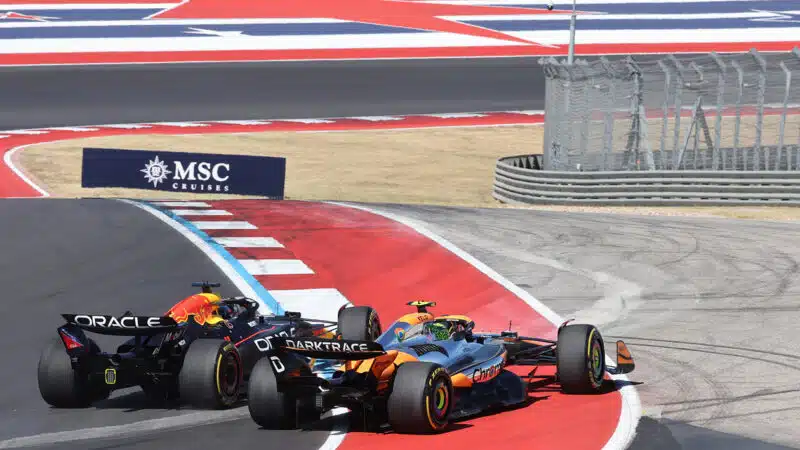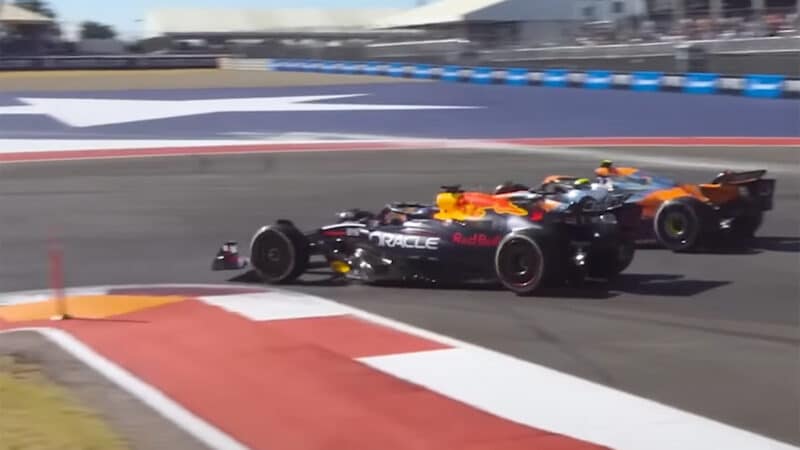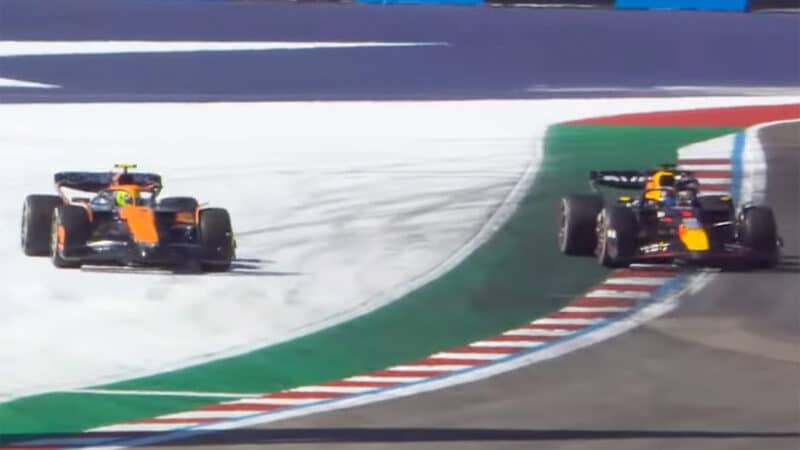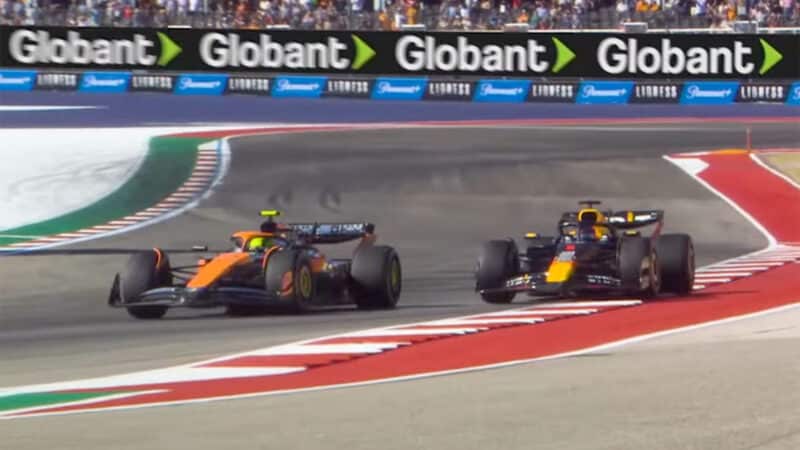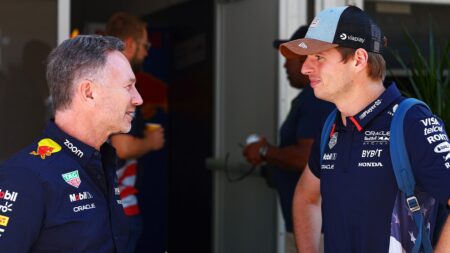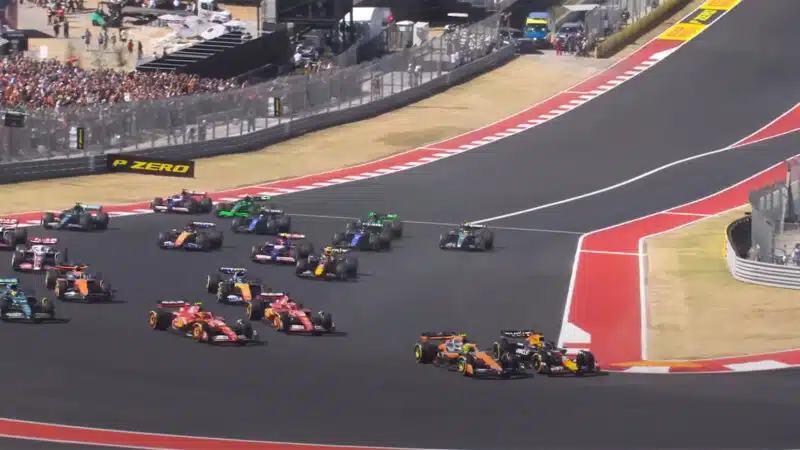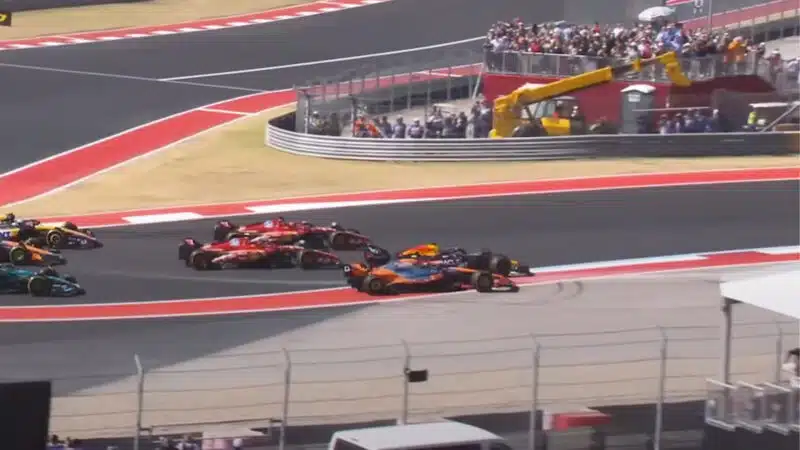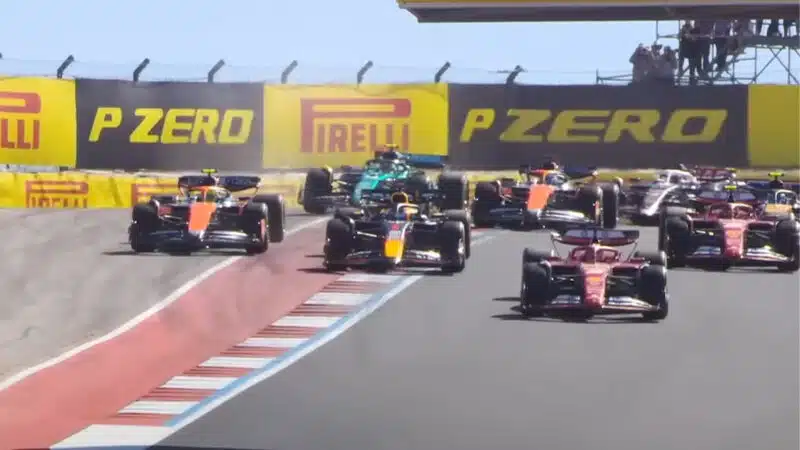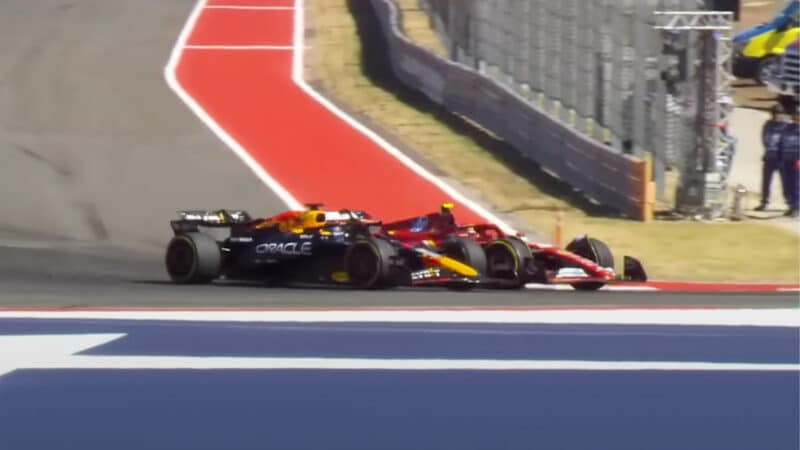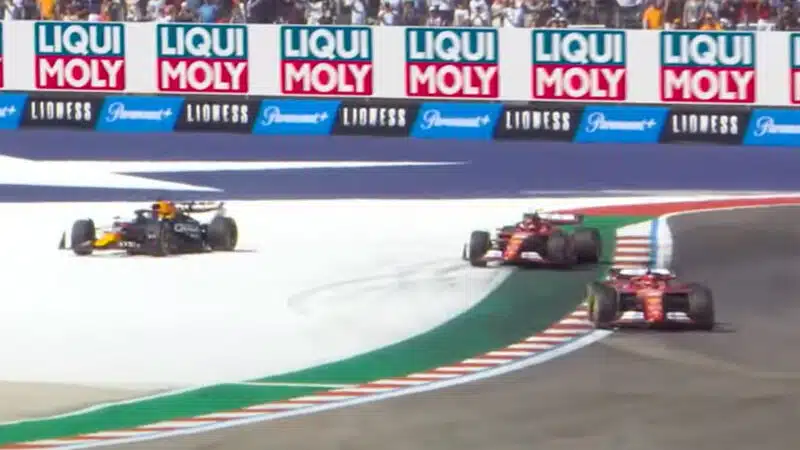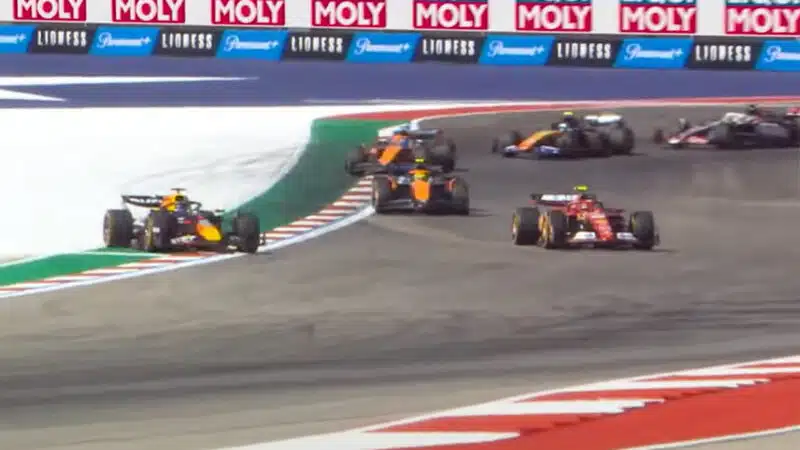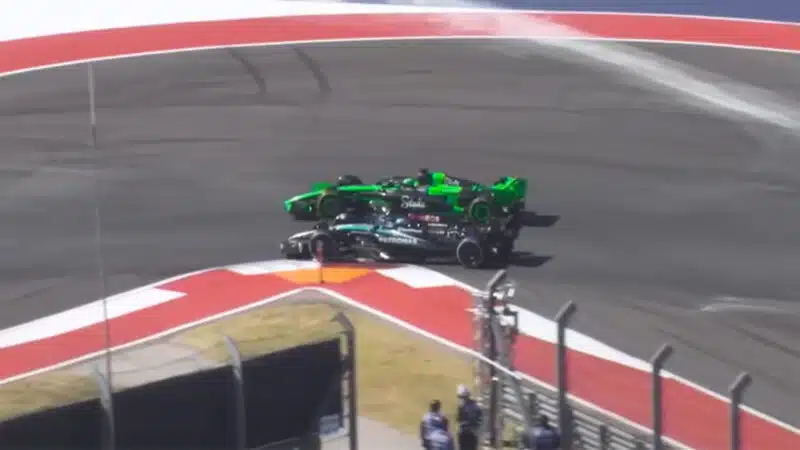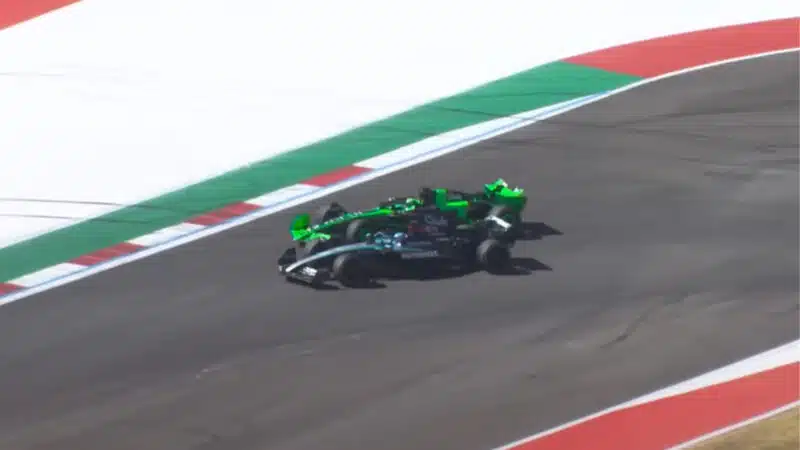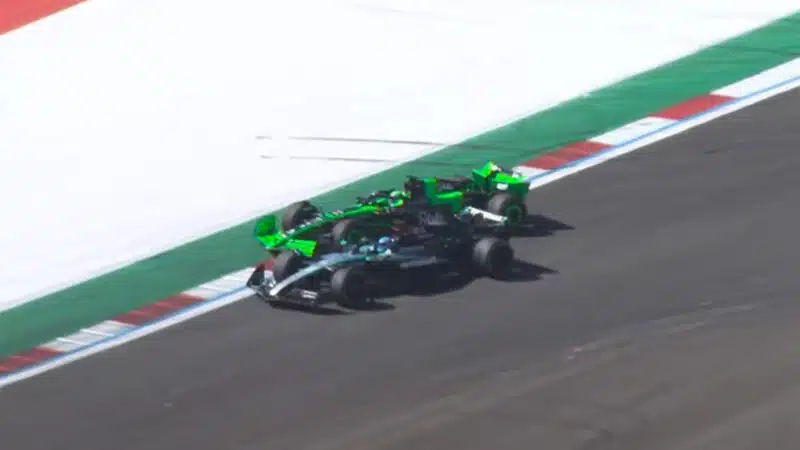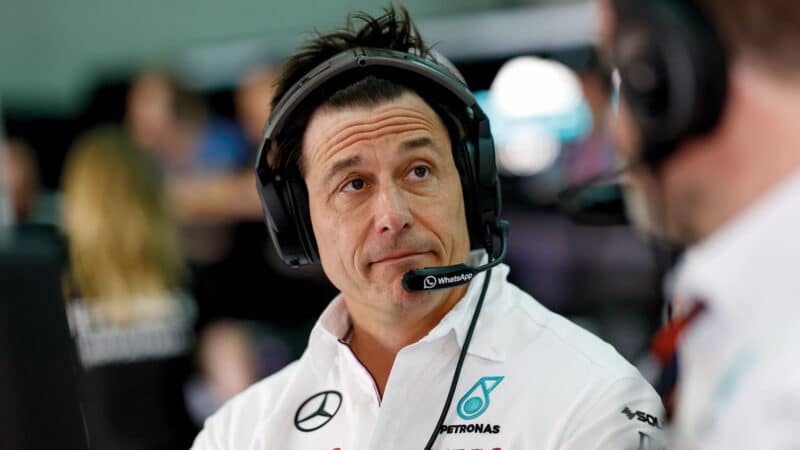“Car 4 [Norris] was overtaking car 1 [Verstappen] on the outside, but was not level with car 1 at the apex,” wrote the stewards. “Therefore under the driving standards guidelines, car 4 had lost the ‘right’ to the corner.
“Accordingly as car 4 left the track and returned in front of car 1, it is deemed to be a case of leaving the track and gaining a lasting advantage.”
“A 5-second penalty is imposed instead of the 10-second penalty recommended in the guidelines because having committed to the overtaking move on the outside the driver of Car 4 had little alternative other than to leave the track because of the proximity of car 1 which had also left the track.
“In view of the above, we determine that this will not count as a track limit ‘strike’ for car 4.”
While the stewards noted that Verstappen had left the track, they appear to have put more weight on Norris being behind Verstappen at the apex when judging that the McLaren driver was at fault.
It’s this judgement that has confused F1 viewers, from Brundle to multiple commentators on social media, asking why the guideline stating “the car being overtaken must be capable of making the corner while remaining within the limits of the track” has apparently been ignored.

Verstappen blocks Norris at the start of the US GP, drawing both cars off the track
McLaren
The repercussions could be felt quickly, with Mexico also featuring a long straight, with a tight corner and run-off where cars can gain an advantage — offering benefits to any driver imitating Verstappen’s defensive technique.
The reigning champion was ahead of Norris at COTA’s Turn 12 apex partly because of the speed that he was carrying into the corner. Without access to the multiple camera angles and detailed telemetry available to the stewards, it’s impossible to say for sure, but this speed appears to have carried Verstappen off the track.
It’s far from the first time that Verstappen has adopted the technique. In his heated title battle with Lewis Hamilton in 2021, he employed a virtually identical defence in the Brazil, running off track, and sending the Mercedes even wider, as it attempted to take the race lead on the outside. The stewards took no action but Hamilton — who had stormed through the field after starting 10th — did get past 11 laps later.
There was a similar incident at Turn 1 in Saudi Arabia, but Verstappen was penalised on this occasion after failing to give the place back promptly — one of the examples of apparent inconsistency in how the rules are applied.
Fast-forward three seasons and Norris is echoing the same complaints after COTA. “[Verstappen] also went off the track,” he told Sky Sports F1. “So, if he goes off the track, clearly he’s gone in way too hard and also gained an advantage by doing what he did. He defends off the track. He overtakes off the track.”
Unsurprisingly, McLaren team principal Andrea Stella made a similar point: “My view is that the way the stewards interfered in this beautiful piece of motor sport was inappropriate because both cars went off-track. Both cars gained an advantage. Both cars went off-track.”
Controversially, it also wasn’t the first time that the Dutchman had pulled off such a move — without consequence — in the same race.
Track limits inconsistencies at the US Grand Prix
Norris vs Verstappen — Lap 1, Turn 1
Not penalised
